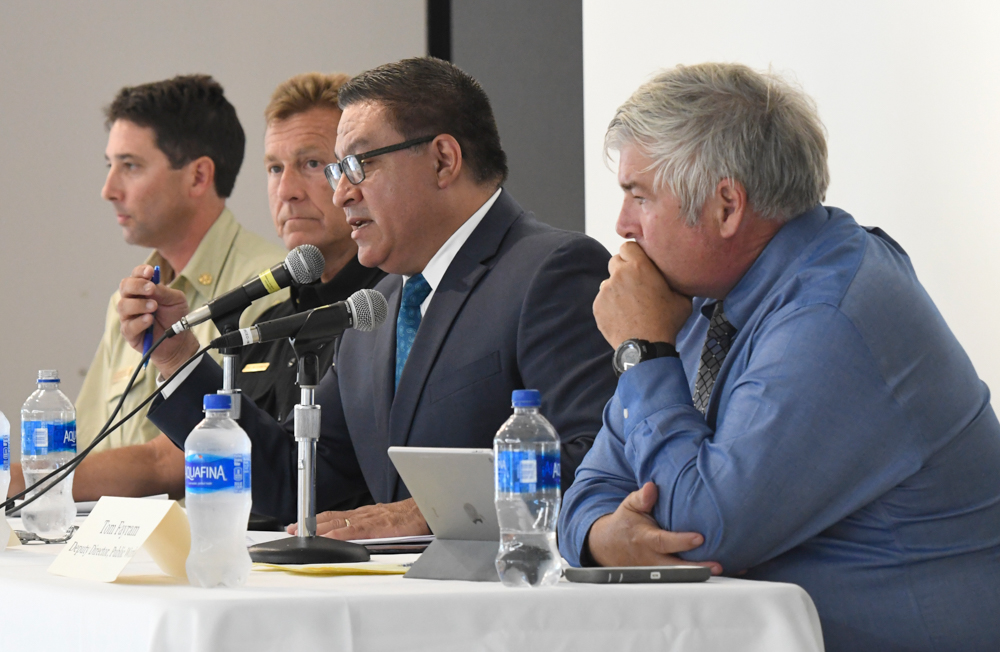Santa Barbara County Town Hall Meets About Fire
Fuel Break, Wildfire Funding, and Drought Topics of Discussion

What are the odds that a fuel break will stop a fire? According to a 2011 study, it happens about 46 percent of the time. “Forty-six percent may not be too good for shooting free throws, but if you live on the other side of that fuel break, I would say it’s pretty good odds,” Nic Elmquist, a deputy fire manager with Los Padres National Forest, told an audience of more than 100 people at a town hall meeting on drought and wildfire held on Monday. Elmquist and Santa Barbara County Fire Chief Eric Peterson said fuel breaks through chaparral help firefighters “grab an edge,” make a stand, evacuate people, and light fires that burn into the oncoming flames to starve them of fuel. “They’re also used for getting equipment and people back into those areas,” he said.
Convened by Representative Salud Carbajal, town hall participants discussed the need for more funding to research the best practices for fighting fire at the edge of urban areas and the possibility that Southern California Edison may cut power during particularly strong windstorms to help prevent wildfire ignition. Among other legislative efforts, Carbajal said he worked to secure $2.5 billion in federal funding to end the practice known as “fire borrowing,” in which the U.S. Forest Service has been routinely forced to “raid” its fire prevention budget in order to pay for ongoing firefighting operations. “We all know that the major reason we are seeing more wildfires is due to climate change, which is also contributing to the ongoing drought conditions on the Central Coast,” Carbajal said.
Tom Fayram, the county’s Water Resources deputy director, said that the current seven-year drought is the longest in Santa Barbara recorded history, based on 100 years of rainfall records at Gibraltar Reservoir. The record drought includes the above-average rains of 2017, Fayram said. Lake Cachuma, normally the main water supply for the South Coast, is at 37 percent capacity, up from 14 percent in December 2016.



